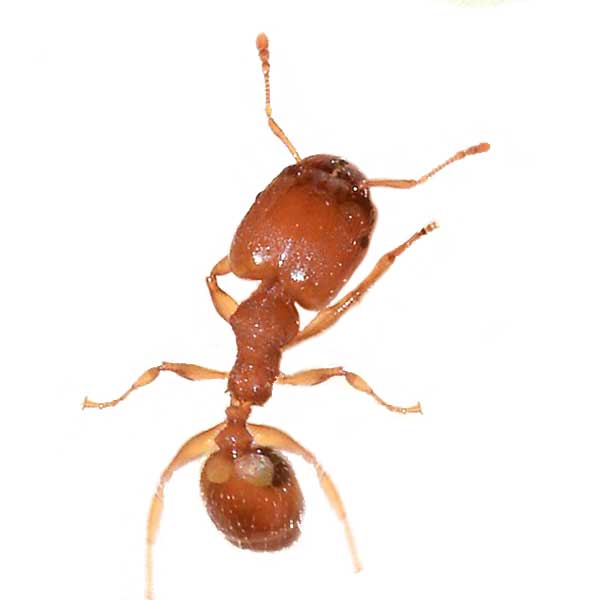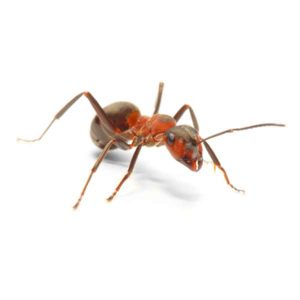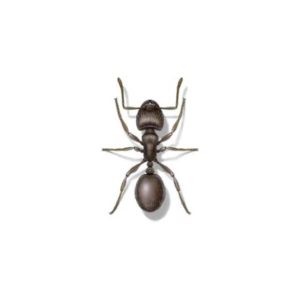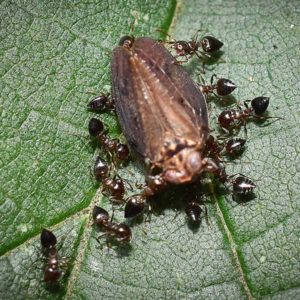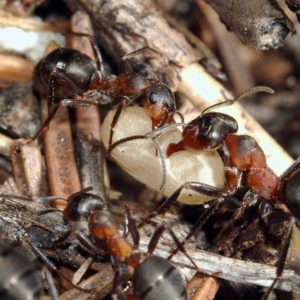Bigheaded Ants in Vermont
Bigheaded ants get their name from their worker’s unusually large heart-shaped head. Considered one of the world’s worst invasive ant species, they are difficult to control as they reproduce year-round. Building large nests in the sand throughout a lawn or landscape, bigheaded ants remove soil, bringing it up through crevices in driveways, patios, and pavers on the exterior of homes. Most species build nests next to foundations where they construct mud tubes, which can be mistaken for subterranean termites. Colonies can reach a tremendous size, with huge extended nests and multiple queens.
Bigheaded Ant Habitat
Most species of bigheaded ants are soil-nesting ants that live on a diet of small insects, and sweet honeydew found in the landscape. Nests are often constructed in the soil next to foundations. Bigheaded ants move quickly and build large colonies with distinct nests, frequently nesting in disturbed habitats like driveways and lawns. They will also nest in leaf litter, firewood, fences, and walls. Infestations typically originate from outside or under a slab foundation. Potted plants are common nest sites that can result in colonies being transported indoors.
Bigheaded Ant Behaviors, Threats, or Dangers
Bigheaded ants do not generally bite unless disturbed and if they do, their bite is not painful. Nuisance pests are frustrating to homeowners as they create piles of dirt and sand and forage into bathrooms, kitchens, doors, and windows, walkways, and driveways. Infestations can be found near structures, ornamental plant bases, and sidewalks. Residents of infested commercial buildings typically complain of finding hundreds of both live and dead ants. Elimination is difficult, as the entire supercolony needs to be treated for complete eradication. If you suspect a bigheaded ant issue, it is best to contact a professional ant exterminator.
Need help with Bigheaded Ants?
We'll call you! Leave your information below.

